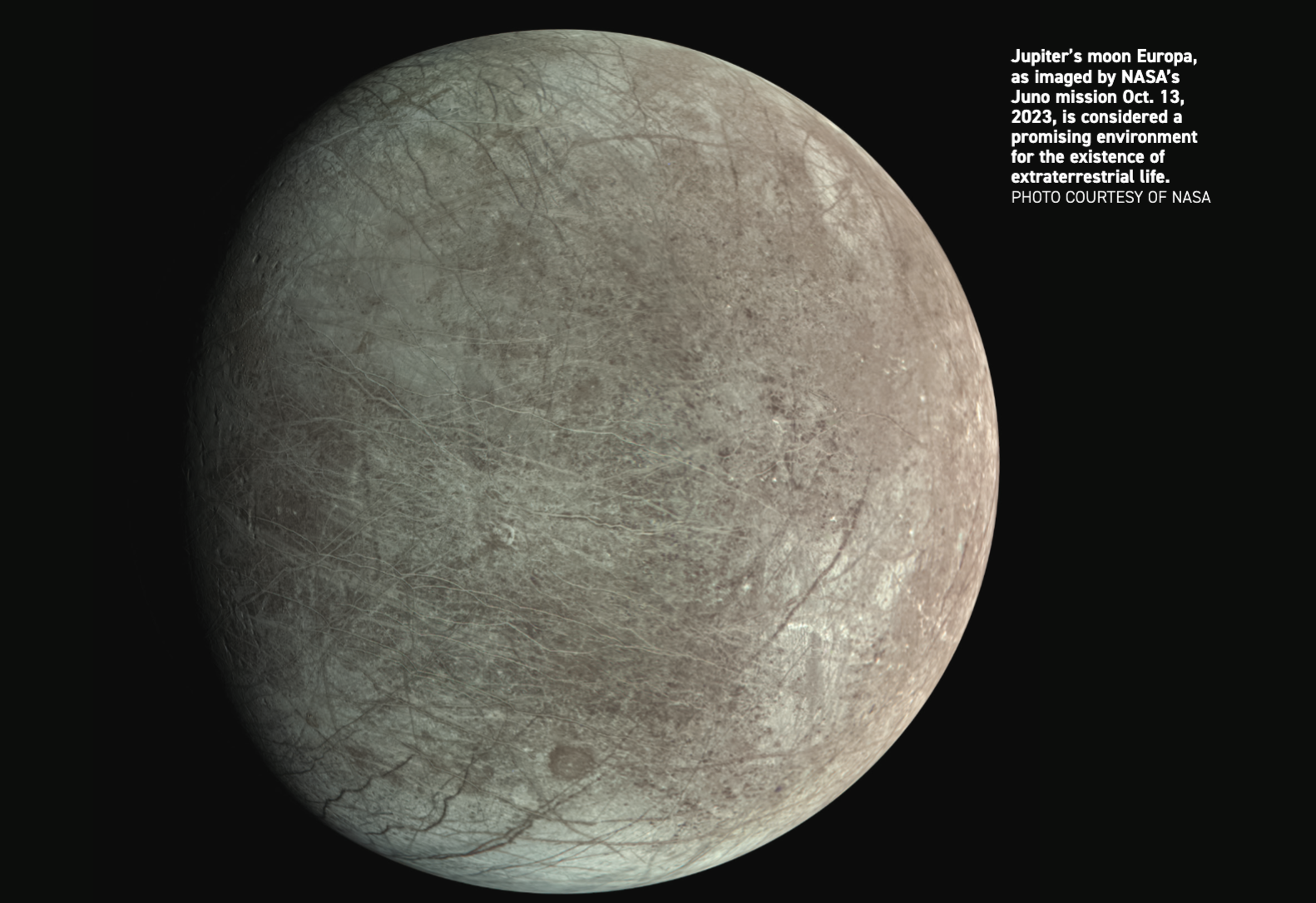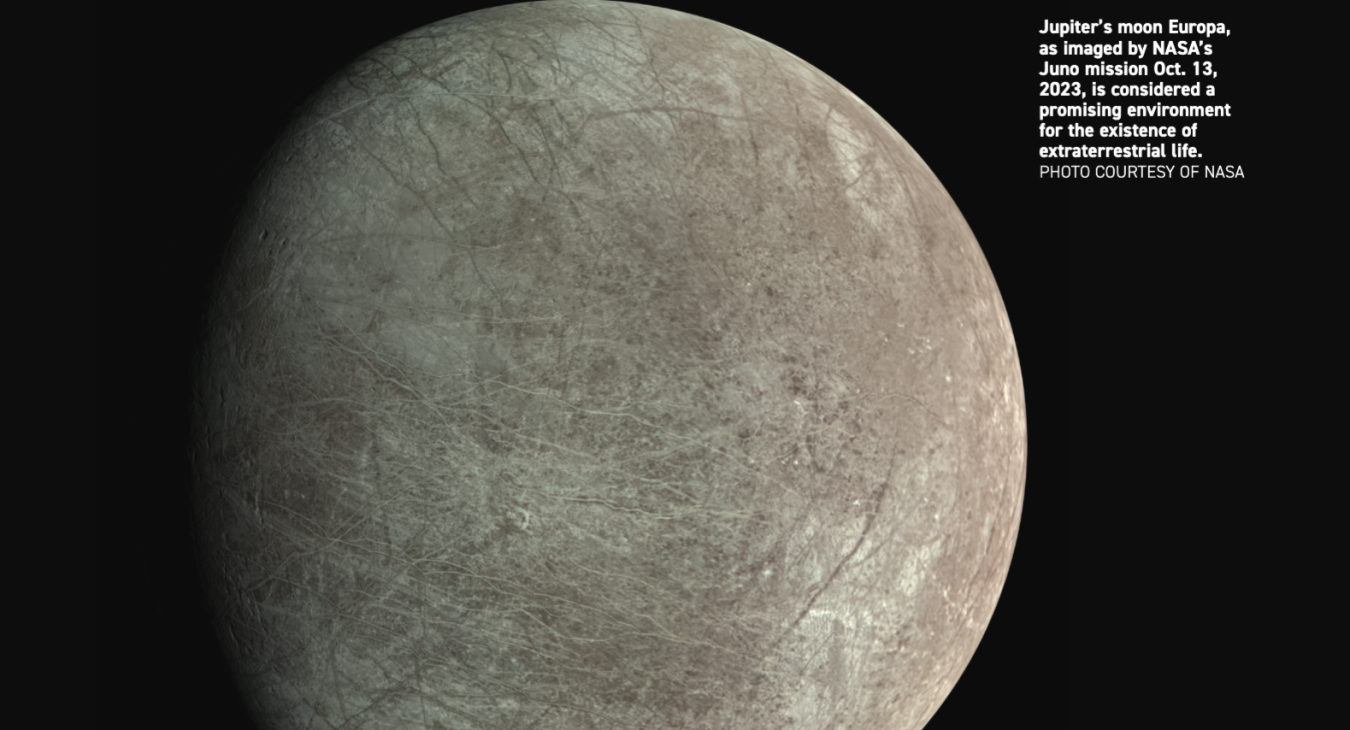The Journey to Jupiter
By Alan Hale
Almost all of our planetary viewing during February will take place in the evening sky. The brightest luminary is Venus, which continues to gleam brilliantly in our western sky throughout the month, setting about two hours after the end of dusk in early February although this interval decreases to about one hour by month’s end. On the evening of Saturday, Feb. 1, the thin crescent moon passes fairly close to Venus, forming an attractive conjunction.
Saturn is low in the western sky during February and disappears into the dusk by the end of the month. Before it does so, on Monday, Feb. 24, it passes quite close to Mercury, although this event will be buried in twilight and difficult to observe.
Jupiter and Mars, both of which have recently passed through opposition—their respective points opposite the sun—are bright and high in the evening sky throughout the month. These worlds remain visible into the morning hours, with Jupiter setting a couple of hours after midnight and Mars following along about three hours later.
Mars and Jupiter have been the destinations of recent spacecraft missions. NASA’s Juno mission has been in orbit around Jupiter since 2016, and continues to be functional and operational. Two other missions to Jupiter were recently launched: NASA’s Europa Clipper mission was launched in October and is expected to arrive at Jupiter in 2030, and the European Space Agency’s JUpiter ICy moons Explorer (JUICE) mission was launched in April 2023 and is expected to arrive at Jupiter in 2031.
As their mission names imply, their primary focus is the study of Jupiter’s large moons, in particular Europa, which previous missions have indicated contains a worldwide ocean of liquid water underneath an icy crust. Europa, which is just slightly smaller than Earth’s moon, is considered the most promising environment for the existence of extraterrestrial life in our solar system.


